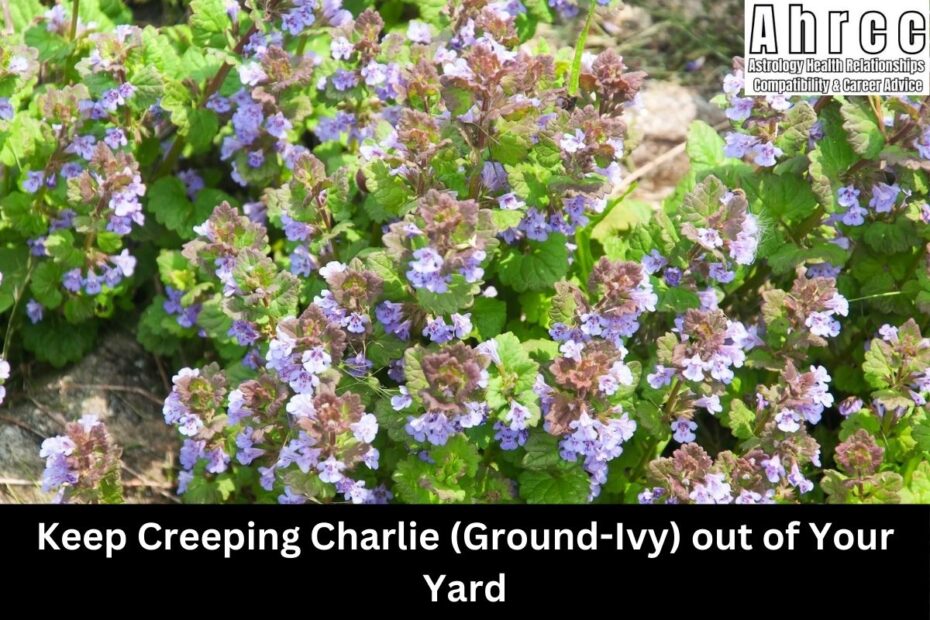Keep Creeping Charlie (Ground-Ivy) out of Your Yard :- It is possible for ground-ivy, also known as creeping Charlie (Glechoma hederacea), to be a weed that is both tenacious and invasive in gardens and lawns. Here are a few helpful ways that you may use to prevent it from entering your yard:
Keep Creeping Charlie (Ground-Ivy) out of Your Yard
1. Maintain a Healthy Lawn
Regular Mowing: If you mow your lawn on a regular basis, you can help avoid Creeping Charlie from taking hold of it by maintaining its thickness and general health. A height of approximately 2.5 to 3 inches should be aim at.
The use of a well-balanced fertilizer is recommended in order to encourage robust development of grass. Weeds can be outcompeted by a grass that is healthy and dense.
2. Improve Lawn Drainage
Aeration: An annual aeration of your lawn will increase the drainage of the soil and reduce the amount of compaction. This not only promotes the growth of your lawn but also helps to prevent the development of weeds.
It is important to water your grass in a manner that is both deep and infrequent in order to promote the establishment of deep roots. To avoid creating conditions that are conducive for Creeping Charlie, it is important to avoid overwatering.
3. Use Mulch and Ground Covers
In order to prevent the growth of weeds, mulch should be applied to garden beds and the areas surrounding plants. Wood chips and bark are two examples of organic mulches that can be used to prevent Creeping Charlie from establishing itself.
Covers for the Ground: If you plant ground covers that are dense and vigorous, you can assist prevent Creeping Charlie from conquering such places.
4. Hand Pulling and Manual Removal
Creeping Charlie can be pulled by hand for lesser infestations. When doing so, make sure to remove the entire root system in order to prevent the plant from growing again. When the soil is damp, this tactic is at its most effective.
Also see :-7 Ways to Sleep Better with Ulcerative Colitis
5. Apply Herbicides
It is recommended that you make use of a selective broadleaf herbicide that is effective against Creeping Charlie but does not pose any risk to your lawn. It is possible to achieve success with herbicides that comprise components such as triclopyr or dicamba. When applying, make sure to follow the instructions on the label.
In order to achieve more precise control, spot treatments involve applying herbicide directly to the regions that are impacted. When working with herbicides, exercise caution so as not to harm plants that are desirable.
6. Improve Soil Health
Evaluation of Soil: Conduct an analysis of your soil to ascertain whether or not it contains any nutrient deficits or imbalances. To produce conditions that encourage the growth of grass rather than weeds, the soil should be amended as necessary.
Adjustment of pH: Creeping Charlie is most at home in soils that are acidic. You might want to consider adding lime to your soil if it is excessively acidic. This will raise the pH of the soil, making it less conducive for the weed.
7. Implement Integrated Weed Management
The combination approach is one that involves combining multiple strategies, such as enhancing the health of the lawn, manually removing the weeds, and utilizing pesticides. This approach can be more effective than relying on a single tactic.
